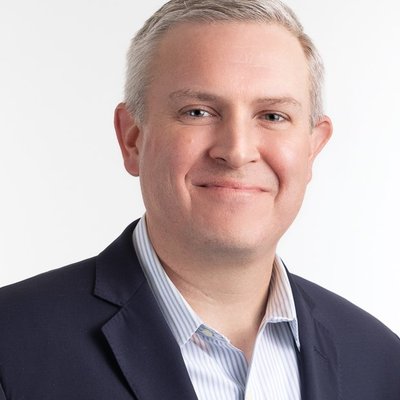In this Q&A series, Tim Morant (TM), Chief Risk Assessment Officer at Munich Re Life US, explores the rapidly changing risk assessment landscape with industry experts.
Dave Goehrke (DG), a seasoned life insurance underwriter, is Head of Underwriting Risk Management and Pricing Support at Munich Re Life US. With over 25 years of experience, Dave has a deep understanding of risk assessment and is playing a key role in driving its progress.
Can you provide an overview of your career path?
DG: Believe it or not, I actually knew about underwriting before my first underwriting job! I was an Economics major, and a professor suggested looking into actuarial science. I did, and my reaction was, “NO WAY!” But through that research, I came across underwriting, which sounded more interesting. My first job was as a life underwriter at a large P&C company. It was great training, not only for technical underwriting but also the importance of field relations. The company was a large writer – a production shop – so I learned a lot about operations, too. After that, I moved to reinsurance and never looked back. I really like the variety of carriers we partner with and our innovation mindset. I especially value the personal relationships developed with so many colleagues and clients. But I leverage that training and experience from my first job almost every day!
Can you think of a time or opportunity that had a major impact on the trajectory of your career?
DG: Twice I seriously considered becoming an agent. I became licensed and had an offer, but I chose to remain a home office employee. Through the interview process, I learned the agent’s perspective, and that appreciation has made me a better underwriter. Sales roles are tough, especially if you are commission-based. Over the years, I’ve become close with several producers. I respect what they do, after all, nothing happens without sales! But I am happy where I am now.
What key market underwriting trends excite you about where things might be headed?
DG: I am excited to see electronic medical data, especially electronic health records (EHRs), get us closer to full underwriting mortality protection, especially for less complex medical histories. I am hopeful that someday soon, we can issue a good segment of business in a day or less, without needles or exams, and assume fully underwritten mortality. The desire is there and so are the competitive forces, so I am confident.
What can we do as an industry to react to or stay ahead of these trends?
DG: We should always consider how technology and data can help us better serve the ultimate customer. One example is utilizing the available underwriting system solutions to help relieve the burden of resource-intensive DIY. It’s also essential to have a strong corporate culture where underwriting has a seat at the table in decisions that affect risk selection and how business will be processed.
What are some of the major challenges you see that the industry is facing or will face in the near term?
DG: There are not enough underwriting resources or training programs to satisfy the entire market, especially underwriters who are service-focused and equipped to face distribution as a promoter of their company. We have great solutions out there to streamline business, but too often, I get asked about how we can streamline even more, “because we don’t have the resources to fully underwrite the kickouts.” We have made great progress in automation, but we need more progress in training underwriters for the future.
Attention to detail not only protects the insurer from potential losses but also ensures that applicants are treated fairly and receive the coverage they need. It starts with getting the correct history upfront and verifying with the proper evidence.
Dave Goehrke
Munich Re Life US
Are there any blind spots that worry you in underwriting today or in the life insurance market in general?
DG: An advantage of rules and models is the consistency of the decisions they provide. However, as an industry, we are not doing enough to conduct retrospective reviews of how well our risk selection is performing. A lack of robust monitoring and a feedback loop that allows for fine-tuning adjustments is something I see all too frequently. The chances of fraud and misrepresentation are higher when no fluids or physical measurements are taken. It takes time to really understand how well a new underwriting paradigm is working, and it becomes difficult to optimize or make any changes at all without rigorous monitoring practices.
If so, what can we do to fix those blind spots?
DG: Monitor, monitor, monitor. One of the nice things about EHRs is that they can be useful on either the front or back end. Comprehensive EHRs can give us more confidence about the risks we are putting on the books. A good number of applicants get routine physicals with labs, and measured BMI and measured blood pressure within EHRs can go a long way toward combating misrepresentation. I encourage carriers to use these records to their advantage to speed up their process with evidence-based underwriting decisions.
Do you have a long-held position that you have reconsidered in recent years?
DG: I am generally optimistic about the use of technology, but I do believe it will only go so far. There will always be a considerable percentage of our business that can only be effectively underwritten by humans. Complex individual medical conditions and personal finances in high face amount cases are often too unique for automation. Add to that the pressure from distribution channels and pressure on price from the competition. I am quite sure that human underwriters will always be our best asset in the proper risk selection of complex business.
What does it mean to you to “get the basics right,” and why would that be important in underwriting and risk assessment?
DG: When I think about the basics of life insurance underwriting, it’s about why it all works in the first place. Two parties are engaging in a contract for a service at a fair price. Behind the scenes are the actuarial tables based on life expectancy. But for this to work, there must be an understanding of each risk. Attention to asking the right questions and reviewing all underwriting evidence thoroughly ensures that the two parties enter into the contract with full disclosure. Attention to detail not only protects the insurer from potential losses but also ensures that applicants are treated fairly and receive the coverage they need. It starts with getting the correct history upfront and verifying with the proper evidence. This is highly dependent on the way we interact with our ultimate customers
The next article in this series will explore the high net-worth life insurance market with Mike Happold, Head of Facultative Underwriting.




